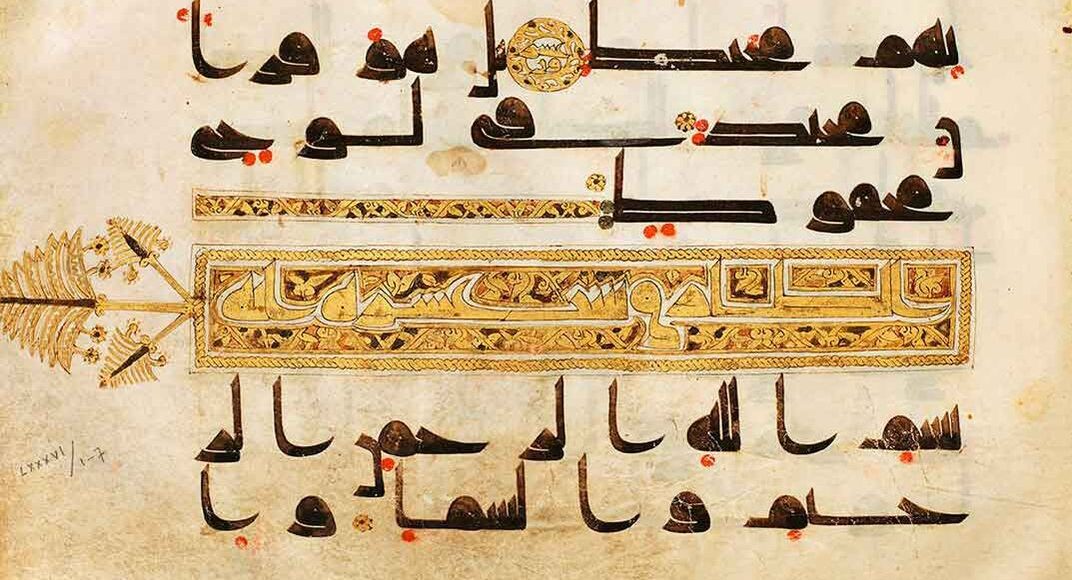Similarities and differences in how Christianity and Islam aestheticize the written word in sacred books produced between the 7th and 9th centuries. What do those similarities and differences reveal about connections and divides between the two religions?
Please note that this is a scholarly article, so it is longer and more dense than our usual readings in this class. Give yourself enough time to read it slowly and carefully!
Here are the images we will be discussing (all from the article, plus Layiwola’s talk).
Readings:
- Umberto Bongianino and Benjamin C. Tilghman, “Kufa and Kells: The Illuminated Word as Sign and Presence in the 7th-9th Centuries,” in Imagining the Divine: Exploring Art in Religions of Late Antiquity Across Eurasia, Jas Elsner and Rachel Wood, eds. (London: British Museum, 2021), 44-65.
We will also take some time to discuss the lecture by Prof. Layiwola that you attended yesterday afternoon.
Model question 1: The Elgin Marbles were on my mind when I was watching Dr. Peju Layiwola’s talk yesterday and especially just how common of a practice colonial looting especially by Europeans like Elgin. Moreso, her talk gave clarity to me about the culture of Benin and the significance of these artifacts. How this looting was also symbolic of the superiority Europeans felt which justified their actions (as evident by the pictures of European looters from the slides). This personal example from Dr. Peju Layiwola was incredible genuine and heartfelt that I considered deeper the cultural significance of these artifacts and by having them displayed elsewhere as someone else’s prize is such a foul concept. Lastly there was a political cartoon of african artifacts been illegally held in United States and yet African Americans were not legally allowed in the states. This just probed my interest into how twisted our society is especially regarding material objects and how greed and a sense of superiority justified this grand injustice. By not paying respect to the indigenous culture of which these artifacts stem but celebrating them for their beauty is awful and I would very much like to study this topic further.
Model question 2: One mian difference Bongianino and Tilghman describe is that the Islamic traditions stress the Qur’an is an oral revelation. However, it was hard to maintain this oral tradition as the empire expanded so they wrote it down. On the flip side, Christianity highly emphasizes textuality and books. They did this because they wrote accounts of Jesus’ teachings and disseminated these even when under persecution. They had an emphasis on text/book for this reason, and this is manifested symbolically throughout many books. Also, another difference is that Isam was more concerned with the divine immanence of the text, whereas Christianity was focused on signification/signs and symbols that require close reading. Islam saw the work as pure and clear. This is then manifested in the way the book is created because the words are disengaged from the meaning of the text in order to never give semantic emphasis to particular letters/words/passages. Instead, they want to present the word of God as homogenous and indivisible. On the flip side, Christian texts are highly stylized and varies. It uses different symbols and emphasizes different texts, with a very different ideology than that of uniformity.
